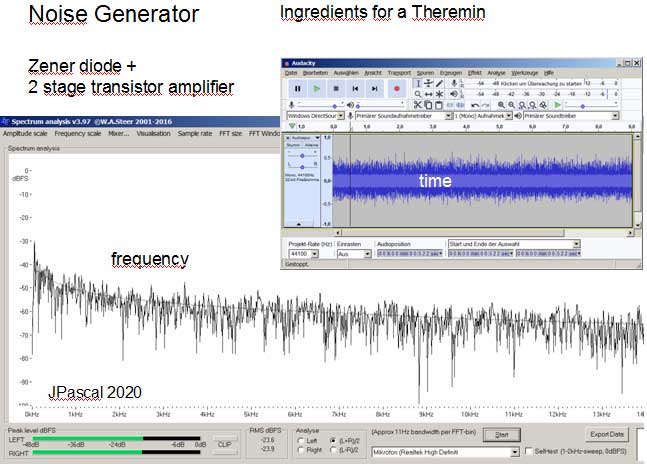"velocity" or "volume acceleration" should be supported as a new standard. Your costumers and also first reactions of professional players on my video indicates this
I always wondered why I haven't seen other typical analog synth modules somehow modulating a theremin. Could also get more timbres out of it.
After all, it *is* an electronic instrument. Different from a violin, it's kinda natural to stick things to it that increase the palette of sounds you can make with it. And heaven forbid it might make playing easier in some regards - as that would mean you're not a real musician anymore, doing little with a lot of instead of doing a lot more with the same...) effort, I suppose.
basic experiments
This is a very interesting solution. I also like the possibility of realizing this effect on the Moog EtherWave.
You need to get used to everything new. This device will help some, while others may be disappointed. In any case, you need to somehow test these capabilities in relation to yourself, as to the performer. You need to remember only one thing: Without an artist, the technique will not play by itself.
"I always wondered why I haven't seen other typical analog synth modules somehow modulating a theremin. Could also get more timbres out of it.
After all, it *is* an electronic instrument. Different from a violin, it's kinda natural to stick things to it that increase the palette of sounds you can make with it. And heaven forbid it might make playing easier in some regards - as that would mean you're not a real musician anymore, doing little with a lot of instead of doing a lot more with the same...) effort, I suppose." - tinkeringdude
I suppose it's because an analog Theremin is sorta squirrelly in the first place, deriving control voltages from its axes is another inexact science, and feeding this to analog synth modules completes the rickety gauntlet. It's my conjecture that *everything* from the antennas on down needs to be as stable and repeatable as possible before it's really worth building on.
But one could easily add 3 or 4 bandpass filters to an EW and dial in more human vocals than they could shake a stick at, not sure why that never seems to happen. Too many knobs? Perhaps it's a bit beyond most Theremin designers / builders? It's not "traditional"? It requires op-amps? I dunno. But it's a total blast to play with different voices, and it adds a whole new dimension to the Theremin.
Also, many things are rather difficult in analog, or analog / digital hybrids. Responsive tuners are problematic, which makes pitch correction trickier.
Valery: "You need to get used to everything new. ...You need to remember only one thing: Without an artist, the technique will not play by itself."
That is the point! This is not a gimmick to switch on or off to make special effects. This is a basicly new function you can decide for or not. The volume hand makes naturally moves - as Dominik mentioned - and the response is, what you want to express with it. That is also a brain thing.
I mean, the volume skills for this dynamics have to be learned by long term practice similar to the pitch- and vibrato-abilities of the performer. It offers a new theremin world for the volume control.
Yet a side step. I'm going to do some experiments with noise as a source of timbre effects. As a joke, you could play a stormy night directly with the volume control. However, this is not my goal. Noise is tested as an additional input for VFO, VCA, filters, etc. Natural sounds have certain stochastic components. With respect to the attack acceleration could be there some new aspects.

With the Zener diode-noise-generator and proper change in filtering you can approximatly toggle from 1/f^2 to 1/f noise. Just for fun - and with respect to shutdown the brain in times of crisis - here is a little video. Filter is not only a deep pass, also a resonance is used (wah-wah).
Next step is once again the timbre of theremin. All known theremin patterns without postproduction are mostly flat with a small number of ripples. Treble frequencies come from sharp jumps or edges in the repeating time signal, which correspond to more intense overtones.
Instruments like bassoon have a very rich timbre with a lot of overtones. I wondered if this could be done with an analog Theremin. The result is not yet perfect, but the door seems to be open.
Here is a sound sample of a special signal shape tested.
https://soundcloud.com/jp-channel-981239111/jp-theremin-test-contrabassoon
You must be logged in to post a reply. Please log in or register for a new account.


